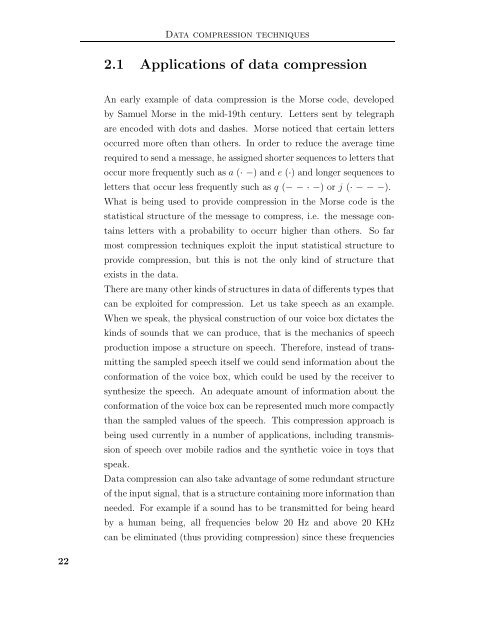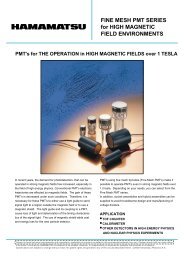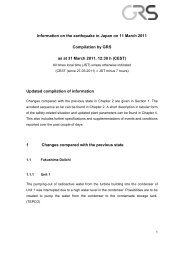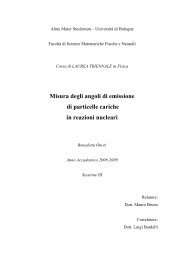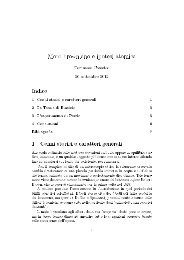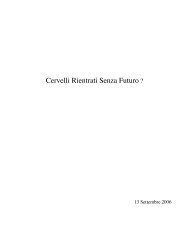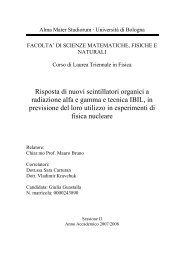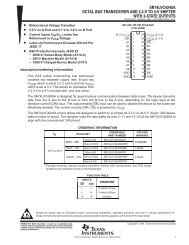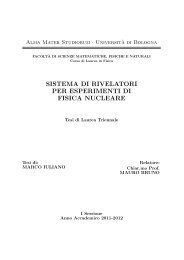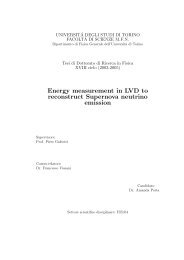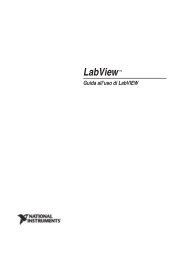hardware implementation of data compression ... - INFN Bologna
hardware implementation of data compression ... - INFN Bologna
hardware implementation of data compression ... - INFN Bologna
Create successful ePaper yourself
Turn your PDF publications into a flip-book with our unique Google optimized e-Paper software.
22<br />
Data <strong>compression</strong> techniques<br />
2.1 Applications <strong>of</strong> <strong>data</strong> <strong>compression</strong><br />
An early example <strong>of</strong> <strong>data</strong> <strong>compression</strong> is the Morse code, developed<br />
by Samuel Morse in the mid-19th century. Letters sent by telegraph<br />
are encoded with dots and dashes. Morse noticed that certain letters<br />
occurred more <strong>of</strong>ten than others. In order to reduce the average time<br />
required to send a message, he assigned shorter sequences to letters that<br />
occur more frequently such as a (· −)ande (·) and longer sequences to<br />
letters that occur less frequently such as q (− −·−)orj (· −−−).<br />
What is being used to provide <strong>compression</strong> in the Morse code is the<br />
statistical structure <strong>of</strong> the message to compress, i.e. the message contains<br />
letters with a probability to occurr higher than others. So far<br />
most <strong>compression</strong> techniques exploit the input statistical structure to<br />
provide <strong>compression</strong>, but this is not the only kind <strong>of</strong> structure that<br />
exists in the <strong>data</strong>.<br />
There are many other kinds <strong>of</strong> structures in <strong>data</strong> <strong>of</strong> differents types that<br />
can be exploited for <strong>compression</strong>. Let us take speech as an example.<br />
When we speak, the physical construction <strong>of</strong> our voice box dictates the<br />
kinds <strong>of</strong> sounds that we can produce, that is the mechanics <strong>of</strong> speech<br />
production impose a structure on speech. Therefore, instead <strong>of</strong> transmitting<br />
the sampled speech itself we could send information about the<br />
conformation <strong>of</strong> the voice box, which could be used by the receiver to<br />
synthesize the speech. An adequate amount <strong>of</strong> information about the<br />
conformation <strong>of</strong> the voice box can be represented much more compactly<br />
than the sampled values <strong>of</strong> the speech. This <strong>compression</strong> approach is<br />
being used currently in a number <strong>of</strong> applications, including transmission<br />
<strong>of</strong> speech over mobile radios and the synthetic voice in toys that<br />
speak.<br />
Data <strong>compression</strong> can also take advantage <strong>of</strong> some redundant structure<br />
<strong>of</strong> the input signal, that is a structure containing more information than<br />
needed. For example if a sound has to be transmitted for being heard<br />
by a human being, all frequencies below 20 Hz and above 20 KHz<br />
can be eliminated (thus providing <strong>compression</strong>) since these frequencies


